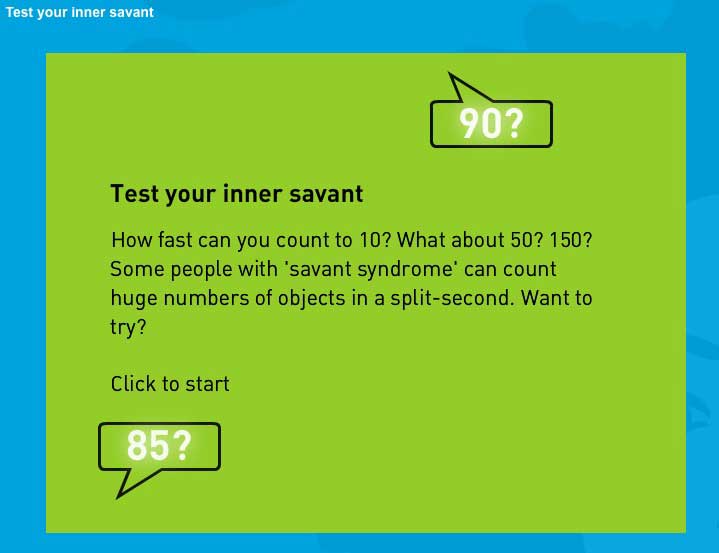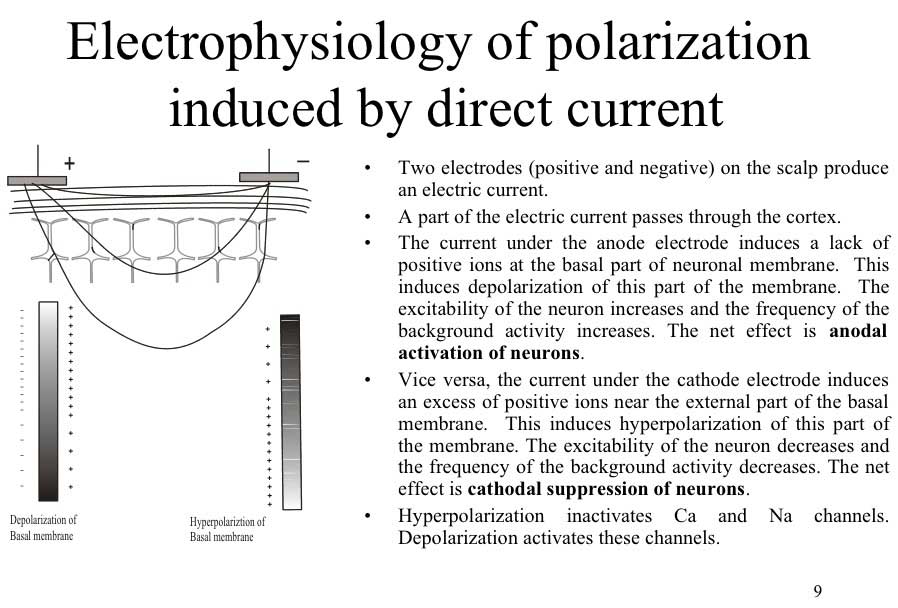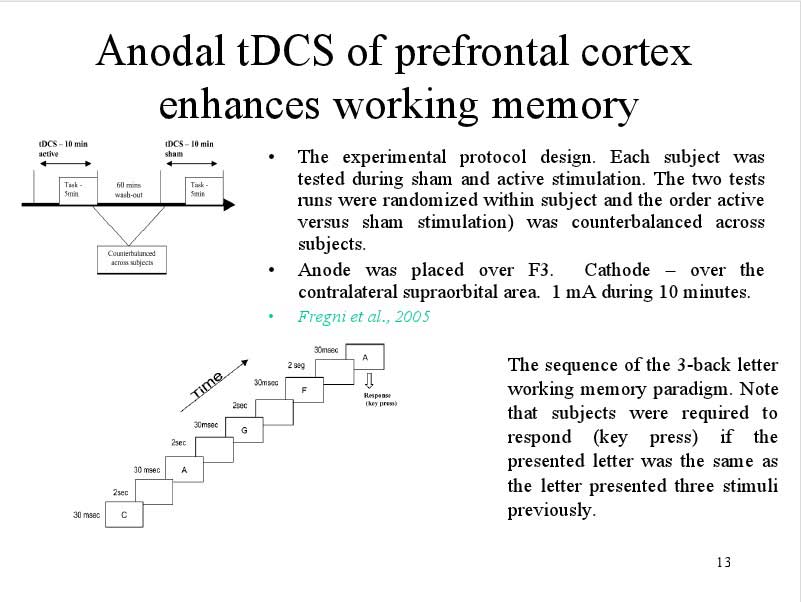Alan Snyder is the Australian Dr. often associated with tDCS, TMS and creativity. We met him earlier on the blog. Dr. Snyder seems to be that rare combination of scientist, marketer and cheerleader for change. Turns out you can try his ‘Savant Test‘ as shown in this Nat Geo clip.
Open Source Hardware TDCS
[Update 3/4/17 Looks like Shawn pulled the tDCS pages from his website. Though it’s still available via WebArchive. But the GitHub link is good.] A DIY tDCS project from Shawn Nock [Update 8/12/12 Shawn has updated his project to derive power via USB!]
The whole project (including all source files) was created with gEDA and friends and is published on github under a Creative Commons Attribution 3.0 License.
Practically speaking, this means that anyone interested in tdcs may (at their own risk): Download the designs, edit or modify them, fork their own design, and sell a product based on this design all without any proprietary (expensive) software.
Those who aren’t inclined to make changes, but want to experiment, can use the pcb design and the bill of materials to make small batches of devices for testing or personal use.
Juri Kropotov – Institute of the Human Brain of Russian Academy
Another significant player popped up today. Juri Kropotov (bio) Institute of the Human Brain of the Russian Academy of Sciences. You can download his 2006 Powerpoint presentation, “Transcranial Direct Current Stimulation (tDCS): a new old tool in neurotherapy” Here. You can see the Google Quick View version (and print it) here. Of special interest may be Kropotov’s use of tDCS in treating ADHD.
Shinzen’s Blog: Meet My New Girlfriend: tDCS
Recently, several people have called my attention to a very simple and quite old form of neuromodulation that is currently gathering a lot of research momentum—transcranial direct current stimulation (tDCS).
Here’s why I’m excited about tDCS.
- Qualitative Significance:
- The effects of tDCS seem to map directly to the core themes in mindfulness.
- Enhanced ability to focus (this seems to relate to the concentration piece in my definition of mindfulness)
- Enhanced ability to detect signals against a noisy background (this seems to relate to the sensory clarity piece)
- Enhanced ability to deal with pain (this may be related to equanimity)
- The turning off of mental talk (i.e., a samatha effect)
Cerebellum and processing of negative facial emotions…
Cerebellum and processing of negative facial emotions: Cerebellar transcranial DC stimulation specifically enhances the emotional recognition of facial anger and sadness.
Abstract
Some evidence suggests that the cerebellum participates in the complex network processing emotional facial expression. To evaluate the role of the cerebellum in recognising facial expressions we delivered transcranial direct current stimulation (tDCS) over the cerebellum and prefrontal cortex. A facial emotion recognition task was administered to 21 healthy subjects before and after cerebellar tDCS; we also tested subjects with a visual attention task and a visual analogue scale (VAS) for mood. Anodal and cathodal cerebellar tDCS both significantly enhanced sensory processing in response to negative facial expressions (anodal tDCS, p=.0021; cathodal tDCS, p=.018), but left positive emotion and neutral facial expressions unchanged (p>.05). tDCS over the right prefrontal cortex left facial expressions of both negative and positive emotion unchanged. These findings suggest that the cerebellum is specifically involved in processing facial expressions of negative emotion.
via Cerebellum and processing of negative facial emoti… [Cogn Emot. 2012] – PubMed – NCBI.
Effects of inhibiting and exciting the left DLPFC–an experiment : tDCS
Exciting! Reports from self-experimenting starting to come in! In this case the author used the Cambridge Brain Challenge suite of tests to guage the effect of tDCS.
Observations The most immediatley obvious and striking effect of tDCS is the modest but significant increase in Paired Associates score during excitatory tDCS. This score, which measures the ability to remember the locations of objects on a screen, likely correlates with overall working memory, which has been previously shown to be improved by exciting the left DLPFC.
Another striking effect is that of excitatory tDCS on the Odd One Out test, a general test of fluid intelligence. Although it only reached a significance level of 0.41, the 1.6667 point average improvement is this task represents a very large gain in performance…
via Effects of inhibiting and exciting the left DLPFC–an experiment : tDCS.
Unleashing Potential: Transcranial Direct Current Stimulation over the Right Posterior Parietal Cortex Improves Change Detection in Low-Performing Individuals
This is pretty fascinating. If I’m getting it, it implies that for this particular brain function there is an upward bounded capability. If you’re already there (say, genius level) tDCS won’t improve your performance, but it will if you’re not already wired at the upper bound! I know from my CambridgeBrainScience.com tests, that I’m especially weak in the VSTM (visual short-term memory) area. [Unfortunately there’s a paywall around this and most other journal paper.] Paper originates from the Institute of Cognitive Neuroscience at the National Central University, Taiwan.
Here we show that artificially elevating parietal activity via positively charged electric current through the skull can rapidly and effortlessly improve people’s VSTM performance.
…The high performers, however, did not benefit from tDCS as they showed equally large waveforms in N2pc and CDA, or SPCN (sustained parietal contralateral negativity), before and after the stimulation such that electrical stimulation could not help any further, which also accurately accounts for our behavioral observations. Together, these results suggest that there is indeed a fixed upper limit in VSTM, but the low performers can benefit from neurostimulation to reach that maximum via enhanced comparison processes, and such behavioral improvement can be directly quantified and visualized by the magnitude of its associated electrophysiological waveforms.
Imaging global brain connectivity can predict how intelligent you are | KurzweilAI
Global hub of the brain
Prefrontal cortex (credit: Wikimedia Commons)
One possible explanation of the findings, the research team suggests, is that the lateral prefrontal region is a “flexible hub” that uses its extensive brain-wide connectivity to monitor and influence other brain regions in a goal-directed manner.
“There is evidence that the lateral prefrontal cortex is the brain region that ‘remembers’ (maintains) the goals and instructions that help you keep doing what is needed when you’re working on a task,” Cole says.
“So it makes sense that having this region communicating effectively with other regions (the ‘perceivers’ and ‘doers’ of the brain) would help you to accomplish tasks intelligently.”
While other regions of the brain make their own special contribution to cognitive processing, it is the lateral prefrontal cortex that helps coordinate these processes and maintain focus on the task at hand, in much the same way that the conductor of a symphony monitors and tweaks the real-time performance of an orchestra.
“We’re suggesting that the lateral prefrontal cortex functions like a feedback control system that is used often in engineering, that it helps implement cognitive control (which supports fluid intelligence), and that it doesn’t do this alone,” Cole says.
via Imaging global brain connectivity can predict how intelligent you are | KurzweilAI.
Abstract
Frontiers | A Randomized Double-Blind Sham-Controlled Study of Transcranial Direct Current Stimulation for Treatment-Resistant Major Depression
Reversing (usual) placement of electrodes in a treatment-resistant major depression (TRD) study resulted in no apparent effect.
Side effects did not differ between the two groups and in general the treatment was very well tolerated.
Conclusion: Anodal stimulation to the left DLPFC and cathodal stimulation to the right DLPFC was not efficacious in TRD. However, a number of methodological limitations warrant caution in generalizing from this study.
Research Opportunity – Pediatric Hemiparesis Study
The Children’s Hemiplegia and Stroke Association CHASA is assisting researchers in the Physical Therapy Department at the University of Minnesota with recruitment of participants for a non-invasive brain stimulation research study. The purpose of this study is to investigate the use of a form of non-invasive brain stimulation, transcranial Direct Current Stimulation tDCS, for interventions in rehabilitation for children who have hemiparesis weakness on one side of the body. This type of non-invasive brain stimulation has shown beneficial behavioral effects and is more cost-effective and portable than previous types. Being able to combine tDCS with other therapies could improve hand function in children with hemiparesis more effectively than each therapy separately.
Can Electrical Stimulation tDCS Enhance Your Brain Performance? Fact Vs. Myth | The ZocDoc Blog
By way of Gareth at Trans-Cranial-Direct-Current.Blogspot.com this article from ZocDoc makes the case for caution…
Needless to say, tDCS should never be tried at home because of these potential risks. Scientists using tDCS in a laboratory setting have the expertise and high-quality equipment to assure the safety of their participants. They also have equipment like EEG and MRI that can help them localize the appropriate brain region for stimulation, as well as the training to understand how and when tDCS could be safe and effective. If you’re curious about tDCS your best bet is to find a local university that studies tDCS and volunteer for an experiment.
via Can Electrical Stimulation tDCS Enhance Your Brain Performance? Fact Vs. Myth | The ZocDoc Blog.
I must say though, that there seems very little to worry about in the publication abstracts cited in the article. Very well worth reading.
Modulating the brain at work using noninvasive transcranial stimulation.
tDCS polarity effects in motor and cognitive domains: a meta-analytical review.
Interesting…“When the anode electrode is applied over a non-motor area, in most cases, it will cause an excitation as measured by a relevant cognitive or perceptual task; however, the cathode electrode rarely causes an inhibition.”
A systematic review on reporting and assessment of adverse effects associated with transcranial direct current stimulation.
(AE, adverse effects) “Although results suggest that tDCS is associated with mild AEs only, we identified a selective reporting bias for reporting, assessing and publishing AEs of tDCS that hinders further conclusions.”
Calling This imgur tDCS
Whoa! Digging a little deeper into the tDCS SubReddit I found this detailed account from a fellow who built his own tDCS device. Long comment thread as well.
TDCS-Transcranial-Direct-Current: My TDCs Experiment
Gareth is experimenting with his own device and measuring protocol. This was his first post he recently completed his 4th experiment.
My name is Gareth Morgan Thomas. I am an electronics engineer amongst many things and am interested in cognitive enhancement.
To this end I have built a TDCs device and am awaiting my disposable electrodes which I will have in 2 days.
I will initially use the protocols for math improvement and working memory.
I also want to use drawing and art to improve my visual memory and imagination so I will use TDCs to this end also.
My objective is general intelligence enhancement.
At some point I will test my IQ and then again after various protocols.
I will utilize the curve of forgetting to reinforce the TDCs rather than just using a protocol once.
This blog is to be the journal of my experimentation.
Joel and John Thread July 17, 2012
Joel Portzer on July 17, 2012 at 10:20 am said:
Hi John,
This maybe isnt the normal theoretical question that you usually get, but you seem to know a LOT about this so i am hoping you can help and i dont know where else to turn.
I have a tDCS device and am not completely sure what montage to use for my purposes. I am learning to trade and specifically need tDCS to boost my pattern recognition skills. It seems this would be the primary, secondary, and associative visual cortex. So, these areas on the 10/20 are O1, OZ and O2 [given pages 26-30 here http://www.trans-cranial.com/local/manuals/cortical_functions_ref_v1_0_pdf.pdf and http://www.trans-cranial.com/local/manuals/10_20_pos_man_v1_0_pdf.pdf ] …. So should i place one electrode right above these areas and then one on my shoulder so that i know it covers these areas (i think i read that on fisher wallace website maybe?)
I really appreciate ANY help you can give. finding info for my purposes has been difficult and even if you can point me in the right direction it would be a great help.
THanks,
Joel
—————
John on July 17, 2012 at 4:23 pm said:
Hi Joel,
Fact is I don’t know that much about tDCS yet. I don’t own a device and I’m not a scientist, just very curious and in the information gathering stage. Probably the closest thing to an active tDCS board is this SubReddit http://www.reddit.com/r/tdcs. I’ll follow-up when I’ve read the manuals you linked to. Off hand though, I wonder how you’d know if tDCS was helping with your pattern recognition. Is there something you already have a lot of experience with that, were tDCS working for you, you’d be able to recognize the difference? I’m going to forward you comment to Petr at brmlab as well. He has more hands on experience.
Best,
JohnH
————————-
Joel Portzer on July 17, 2012 at 5:58 pm said:
Great! Thanks for forwarding my question on and the forum idea. Thats a very good question about knowing if its working- especially because i dont think there is a study that dealt with pattern recognition. Aside from paying upwards of 50 grand to fund a study i dont know what else to do to be absolutely sure, although i am fairly confident given all the other studies positive results. I will be doing the studying anyway, so i figure its a minor cost in time and money and a “probable?” huge benefit.
Thanks again!
Joel
————————-
John on July 17, 2012 at 7:06 pm said:
Hey Joel,
The top spot on the tDCS SubReddit right now is a guy who is doing self-experiments with the Cambridge Brain Science Challenge. They have tests that seem about perfect for our experiments in that many of them are generated by an algorithm, so they’re always different. I’m going to get a blog post up later this evening.
Best,
JohnH
————————-
Joel Portzer on July 18, 2012 at 9:50 pm said:
Yeah i saw that- thanks! Im sure you saw i made my own post. Hopefully someone has some more knowedge on this than i do. Did you get a hold of the guy, Petr, you were talking about? He has some experience with this stuff?
————————-
John on July 18, 2012 at 10:09 pm said:
I sent him your comment so he may reply to you directly. Or you could email him directly. His is the first comment on this page with the address at seznam.cz
I may fold our conversation into a single comment. Good luck with your experiments and keep us posted.
————————-
Thanks John,
BTW, are you interested in getting a tDCS device?
I could get in touch with a guy who will make you one (thats safe) and inexpensive but I will have to introduce you (he’s touchy about who he sells to due to regulations etc.).
I think i got mine for $70 without the pads.
————————-
John on July 24, 2012 at 5:14 pm said:
I am definitely interested in a device. Right now I’m holding out for a GoFlow, or something like it. The reason being, I think it will be easier to build a solid body of data if most of us are using the same device. I’ll give GoFlow another month or so and if nothing emerges it’s good to know about your friend. Thanks
————————-
Joel Portzer on July 24, 2012 at 5:38 pm said:
yeah i was thinking the same thing but i finally gave in a month ago when they were denied by kickstarter. I dont think go flow is going to do it for legal reasons- they are in over their heads.
Do you think the results will be different though? The only variables i see 1) current flow – my ammeter shows the current flow on my device and its pretty steady 2) the type of electrodes people use which can vary greatly because goflow showed sticky TENS pads which dont work on a hairy scalp, and then if people buy sponge electrode pads there the big variable of 3) How wet they keep them with a saline solution and what type of saline solution they use.
Im kinda thinking out loud but in my mind it seems go flow is not going to provide a consistent tDCS experience.
Id like to hear your thoughts.
————————-
John on July 25, 2012 at 12:53 am said: Edit
We’re thinking along the same lines. And I agree, as I’m learning more about it, the electrodes are turning out to be more complicated than I thought at first. If not GoFlow, maybe a kit of some kind, or even a list of specific Radio Shack parts. I don’t think the results will be that different, but it would be great if we were all on the same page, exactly. Same device, same electrodes, same montage (I guess that’s what it’s called – where the electrodes are placed), and same tests. It would be amazing if we could get some oversight from a lab that wanted the data. Hey you’re welcome to contribute to this blog if you feel like sharing some of your experiences some time.
Best, JH
More on HD tDCS From Neuralengr
Video shows computer simulation of current distribution using ‘4 X 1 Ring Configuration (HD-tDCS)
Compared with conventional pads.
Source and more details: http://neuralengr.com/projects/tar
More from CUNY Neural Engineering Group (home of Marom Bikson)
Bio-heat Transfer model of tDCS
High Density Electrodes/Adapters
High-Density Transcranial Electrical Stimulation (HD-TES) Targeting Software Development
And this is interesting. Looks like CUNY is about to spin off another company.
Neuromatters Perhaps the brainchild of Paul Sajda.




